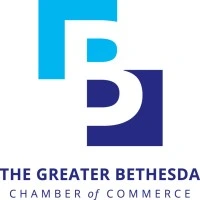If you’ve found your bank balance shrinking in recent months, you likely need a cash injection and some aggressive cash flow management. Instead of going out and borrowing or investing your own cash, you may surprise yourself with where you can find the funds.
The lack of understanding of how cash flows through a business and how profit differs from cash flow is often the reason businesses encounter cash flow problems.
Profit vs. Cash Flow
Profit
As shown on the left of the diagram, income, costs, and overheads are accounted for in the same month, resulting in a profit of $200.
Cash Flow
The right side of the diagram demonstrates that costs must often be incurred before sales are made. For instance, you may need to spend $800 on work, materials, and overheads before receiving payment from a customer. The result? A cash shortfall that must be addressed.
This is why many businesses fail at cash flow management: insufficient cash to cover costs and overheads until customer payments arrive.
Cash Flow Management
Addressing the $800 shortfall requires proactive cash flow management. While traditional methods include bank borrowing, personal loans, or selling business capital, better cash flow management can often resolve the issue.
Drivers of Cash Flow
Improving cash flow involves focusing on the 7 leading drivers:
Revenue Growth
Sales create a need for cash. Ironically, the more sales you make, the more cash you may require upfront. Weak revenue growth can temporarily improve working capital since fewer expenses are incurred, but this is not a sustainable strategy.
Cost and Overhead Percentages
Monitoring the percentage and dollar value of costs relative to revenue is critical. If your revenue increases by 5% but costs and overheads rise by 10%, your profitability is eroded. Systems and tools can provide visibility into expenses, helping you identify savings. Every dollar saved on costs goes directly to your bottom line.
Price Increases
Small, regular price increases are easier for customers to accept and can prevent margin erosion. For example, with a gross profit margin of 60%, a 10% discount requires a 20% increase in sales volume to maintain the same gross profit. Avoid heavy discounting and consider low-cost add-on sales to enhance perceived value.
Accounts Receivable Days (Customers)
This measures the average number of days customers take to pay. Reducing this time improves cash flow. Tactics like incentivizing early payment or stricter follow-ups can help.
Accounts Payable Days (Suppliers)
The average number of days you take to pay suppliers impacts cash flow. Extending payment terms (without jeopardizing supplier relationships) keeps cash in your account longer.
Inventory and Work-in-Progress (WIP) Days
Inventory and WIP are essentially cash tied up in operations. Reducing the time stock sits in storage or jobs remain incomplete frees up cash for other uses.
Forecasting for Better Cash Flow Management
Forecasting is essential for predicting cash inflows and outflows. Use spreadsheets to plot costs and overheads, identifying when you might face a cash shortfall. Historical payment patterns can help you anticipate customer payments, allowing you to take preventive measures if a negative cash balance looms.
Avoid Impulsive Spending
When a lump sum comes in, resist the temptation to make discretionary purchases. Instead, allocate funds strategically to cover upcoming costs and prevent future shortfalls.
By focusing on these drivers and leveraging forecasting tools, you can improve your business’s cash flow without the need for borrowing or selling equity.
For more detailed information on improving cash flow management, download our free eBook: How to Improve Your Business Cash Flow.




